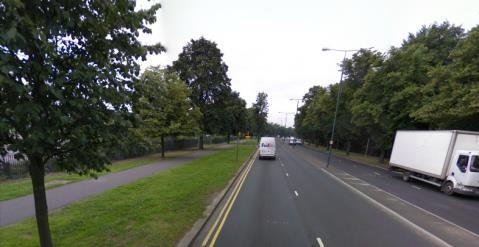This article from The Foreigner – an English language Norwegian news site – says that  statistics suggest drivers from outside Norway are involved in more accidents than “domestic-born” ones.
statistics suggest drivers from outside Norway are involved in more accidents than “domestic-born” ones.
This is the first Statement of the Blindingly Obvious I’ve seen this year. The second isn’t far behind…
A local Norwegian driving instructor of Pakistani origin says he isn’t surprised, and explains that people who come to Norway bring a completely different driving culture with them.
Apparently, the statistics show that male and female drivers from the Middle East, Africa, and Asia are more likely to have accidents in Norway.
The first thing I’d point out is that the problem isn’t confined to Norway. It happens in every country where non-native drivers mix it with the locals. The second thing is that it isn’t just Asians and Africans – British drivers unfamiliar with driving on the right are a big risk wherever they go.
In Nottingham, several years ago there was a large Irish contingent, and their standard of driving was noticeably, um… different. At the moment Nottingham has a lot of Polish and other eastern European drivers, and they can be very aggressive (especially the younger ones). Older Asian drivers – particularly around Hyson Green – are also very suspect.
I’ve been to Pakistan and I know what they drive like. My Indian pupils tell me it is the same in India. The older drivers bring that style over here, and will happily park on double yellow lines outside the Asian food stores to go inside and shop.
Hyson Green has the additional problem that many Asian taxi drivers use it as a meeting (and eating) point. As a result, they will think nothing of carrying out standard taxi manoeuvres in gridlocked traffic (i.e. U-turns, turns in the road, etc.) 5 metres away from traffic lights).
In this respect, they’re only slightly worse than native British women in 4x4s picking up their kids from school.
Going back to the article, what is amusing is that they have a photo of a clearly-British car with L-plates gaffer-taped on to it.
 It just goes to show that no one is perfect – or above the law (well, maybe just a little to the side of it).
It just goes to show that no one is perfect – or above the law (well, maybe just a little to the side of it). 
 workshop manual people – have issued a press release where they say a survey has shown that a third of all road users reckon they would fail their theory tests if they had to take it now.
workshop manual people – have issued a press release where they say a survey has shown that a third of all road users reckon they would fail their theory tests if they had to take it now. eather we’ve had all winter, and the fact that winter tyres really only have benefits that outweigh any drawbacks below 7°C. So between October (the date all the experts reckon they should go on) last year and now, there have been approximately 7 days during which they may technically have been an advantage, and only ONE day so far where they would definitely have been so.
eather we’ve had all winter, and the fact that winter tyres really only have benefits that outweigh any drawbacks below 7°C. So between October (the date all the experts reckon they should go on) last year and now, there have been approximately 7 days during which they may technically have been an advantage, and only ONE day so far where they would definitely have been so.  It provides links to
It provides links to
